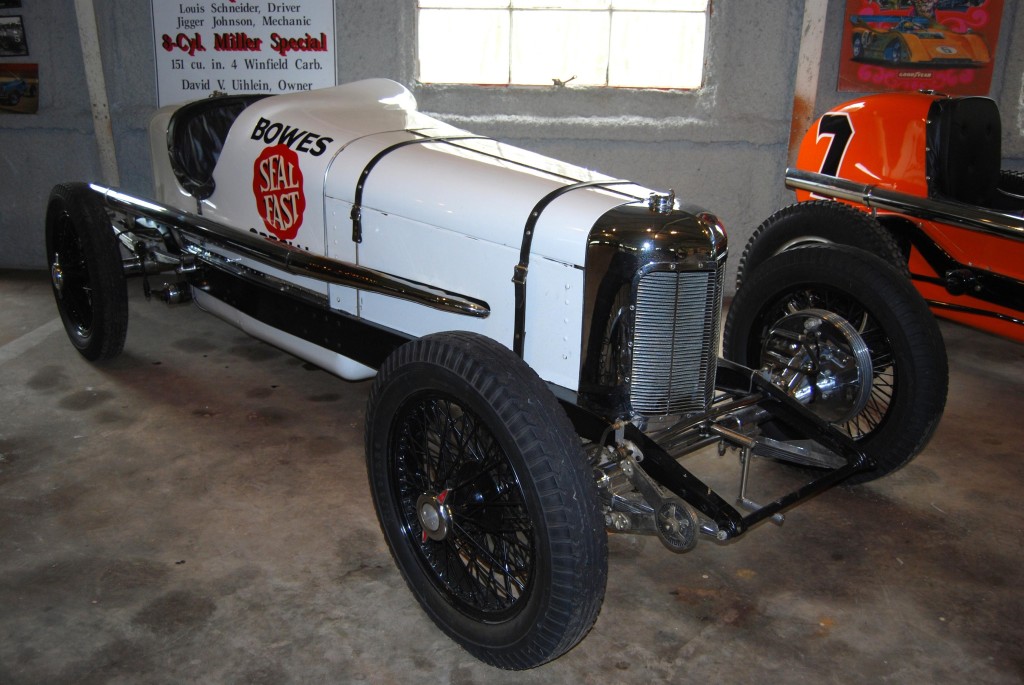Miller’s engines and cars were – and still are – works of art
Each year, in early July, some five-dozen racing relics come thundering out of the pages of history books to circle the famous one-mile long track at Milwaukee’s Wisconsin State Fairgrounds.

There are Lozier, Mercer, Hupmobile, Ford, Chrysler and Kurtis creations with several carburetors, coffee can size exhaust pipes and numbers on their sides. And then, there are the Millers.
Harry A. Miller was a native of Menomonie, WI, who moved to Los Angeles in 1894 to started Master Carburetor Co.
In early 1912, he developed an aluminum-nickel-copper alloy he called Alloyanum. With it, he could make marvelous pistons and high-output manifolds.
Harry A. Miller Manufacturing Co. became the West Coast machine shop to visit if you wanted your car to go fast.

Miller’s started making engines in 1915. This inline six-cylinder, single-overhead-cam aircraft engine caught attention and led racing car driver “Wild Bob” Burman to Miller for a new engine for his 1913 Grand Prix Peugeot, which had suffered a broken con rod.

A second engine for Burman was a twin-cammer with a fully-enclosed valve gear, predating Ballot’s famous design by three years. Miller was credited with creating super-efficient unsupercharged engines and became the guru of supercharging. He adapted streamlining, front-wheel drive and four-wheel drive to racing cars, and could focus on tomorrow’s technology while perfecting today’s.
Miller’s engines and cars were — and still are — works of art. Two years ago the Miller Bowes Seal Fast Special that won the 1931 Indy 500 sold at auction for $2 million plus commission!

A month earlier a Miller 110 engine owned by the same collector-the late – David V. Uihlein, Sr. – brought $72,000 in another auction. Both sales were conducted by
Dana Mecum, an enthusiast who is currently president of the Harry A. Miller Club (www.harrymillerclub.com).
Miller made almost 100 percent of the engines and cars bearing his name. He considered them motoring masterpieces and built them artistically. It required around 6,000 to 6,500 man-hours to construct a complete car. Between 700 and 1000 of those hours went into cosmetics alone: paint, chrome accessories.
In 1921, Miller designed a 183-cid 185-hp twin-cam straight eight with four-valves per cylinder. The Miller 122 was the first pure racing car to be series produced and about 15 were made.
By 1923, nearly half of the cars at Indy had one and by 1925 three-quarters of the field ran Millers. When racing adopted a 91.5-cid formula, Miller created the Miller 91 with a stock 154 hp and up to 285 hp in some applications. By the late-1920s, winners drove Millers for which they had to up around $10,000 (or $15,00 for a more advanced front driver.) The front-drive cars were a thing of beauty with their low radiators and long hoods.
In 1927, a Miller 91 rear-drive set an international speed record of 164.84 mph, including a one-way speed of 171 mph, and an international closed-course speed record of 147.729 mph. In 1930, a Miller 91 front-drive achieved 180.9 mph. Many other international auto and boat speed records were established.
Just ahead of the 1929 Wall St. crash, Miller retired. Around that time,E. L. Cord had given him a $60,000 retainer to consult on development of a front-wheel-drive car and he realized $150,000 from selling his business. He was 54, rich and relaxed, but unfortunately, he was not about to really retire. A new engineering business was launched just as the Great Depression began, and within three years, Miller was bankrupt.
Miller’s veteran machinist Fred Offenhauser bought rights to a Miller engine and improved it into the Offy, which became the most victorious racing engine of all time. Miller himself struggled through the 1930s, trying one project after another and teaming up with various parties from Preston Tucker to Ford Motor Co. to Gulf Oil in trying to create a successful and innovative racing car.
Miller eventually moved to Indianapolis to tinker on aircraft projects with Tucker, while his wife took off for California. By 1941, he had moved to Detroit to set up a testing equipment and tool making business. However, he was not in good health and on May 3, 1943, he died from a heart attack.
The Harry A. Miller Club was founded in 1995 to honor the achievements of the distinguished engine ace. And each year, more people and cars come to the “Millers at Milwaukee-Vintage Indy Car Event” on the second weekend in July at the Milwaukee Mile. n
For more information contact: The Harry A. Miller Club, PO Box 541, Germantown, WI 53022 or call (262) 388-5221.









